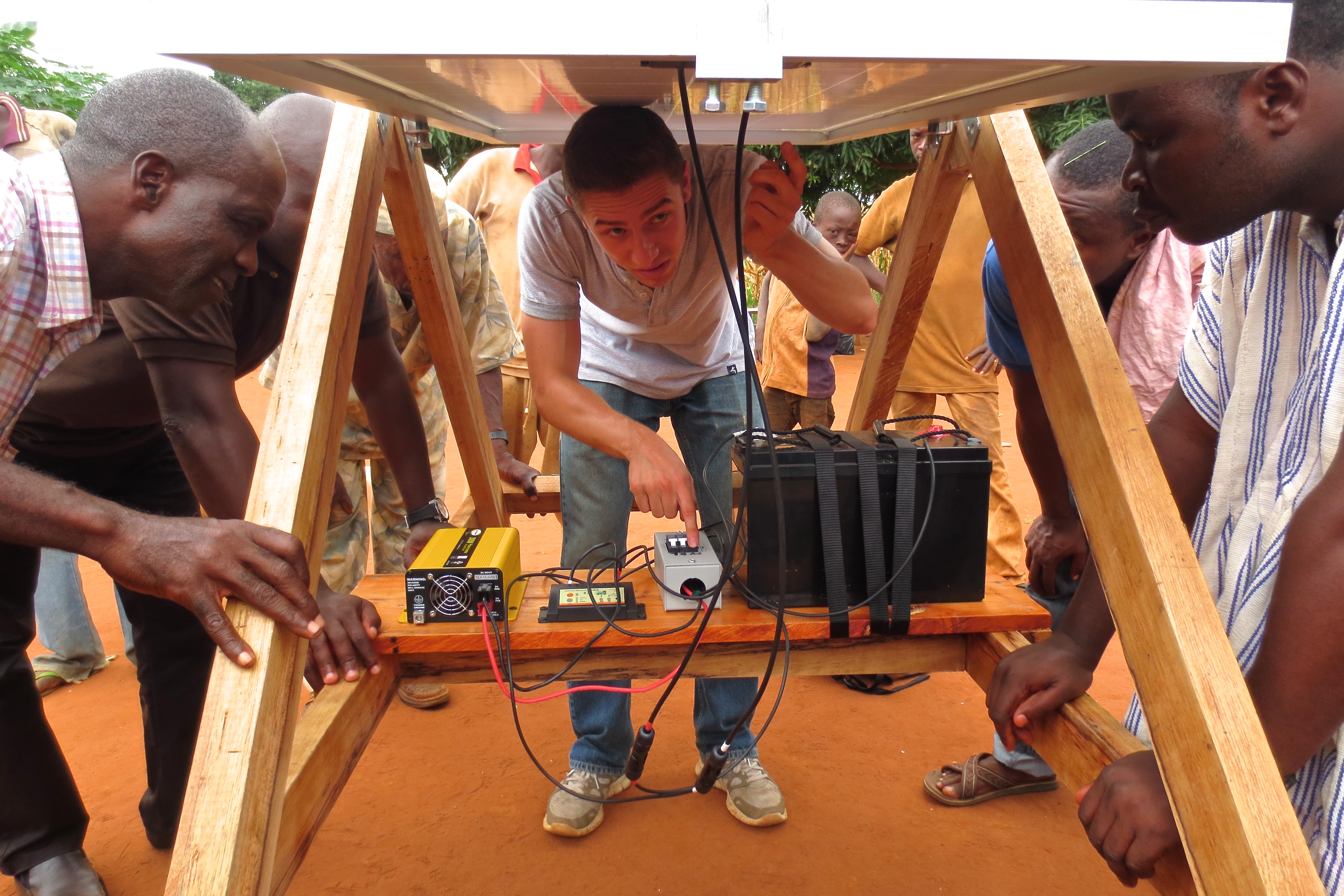
Charged Up
Since he first came to SCU, mechanical engineering junior David Lyons had a yearning to put his talents to good use. In his sophomore year, he and electrical engineering teammate Nathan Garvey designed, built, and installed an off-grid solar tracking system to power small microscopes and water pumps for San Jose’s Guadalupe River Park Conservancy’s (GRPC) Outdoor Environmental Science Program—a challenge they took on to satisfy requirements for their Engineering for the Community class (ENGR 110).
The following summer, David was off to Ghana as a Leavey School of Business Global Fellow, where he took on an internship at a local social enterprise. Additionally, he was tasked with installing a system similar to the one he and Nathan had designed for charging lights and cell phones in the community, which lacked electricity. "I had very few parts, very little money, and no solar connections in Ghana, whatsoever," he said. Countless Google searches yielded local contacts, an impromptu Kickstarter campaign led to funding, and emails with Nathan in Santa Clara established the specifications. A fellow student who was traveling from Lithuania to Ghana brought transformers, adaptors, and other hard-to-find parts in her suitcase. "Luckily, she packs light," quipped David.
The whole project was thrown into peril when David, lacking a hammer, substituted his wire cutter and bent it beyond use. "This was before I had cut any wire. I was freaking out, rummaging around the house, looking through all the kitchen drawers, when I suddenly remembered I’d brought nail clipper scissors. I used those for cutting wire for the entire system. After that, it went a lot smoother than I thought it would. It took about six hours to wire the thing—Nate had sent a picture of a wiring diagram—and I only saw one spark flare; I just did it."
David is especially pleased with the design he and Nathan came up with. "The cool thing is, it’s modular; you can take it apart by unplugging two switches. The solar panel and frame are weatherproof, and all the electrical components are on a shelf that can be removed and taken inside. The battery stores energy so lights or phones can be charged indoors if it’s raining."
Using every penny of the more than $1,500 he’d crowd-sourced, David bought 20 rechargeable lights for the village. "I was surprised when they kept maybe five and gave the rest to the surrounding communities, distributing the wealth. Improving safety and communication for them is very rewarding."
In summing up his experience, David said, "It’s been weird being back. I almost feel like I dreamt up this project. It doesn’t feel like I put a lot of effort into it because I was so passionate about it. It completely dominated everything I was thinking about at the time, and then it kind of vanished. I had to have faith in the system when I left."
Read more about his experience in David’s blog.